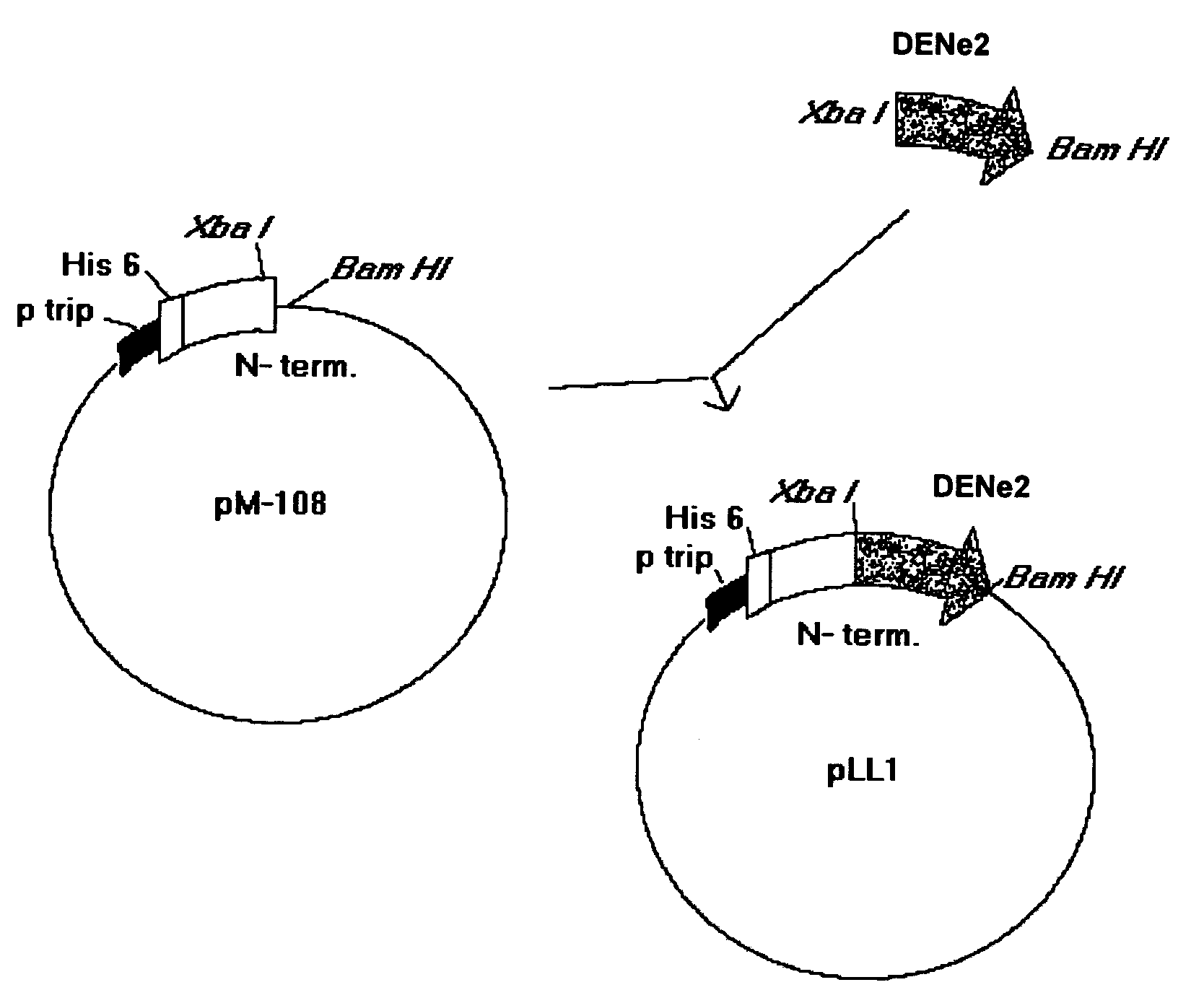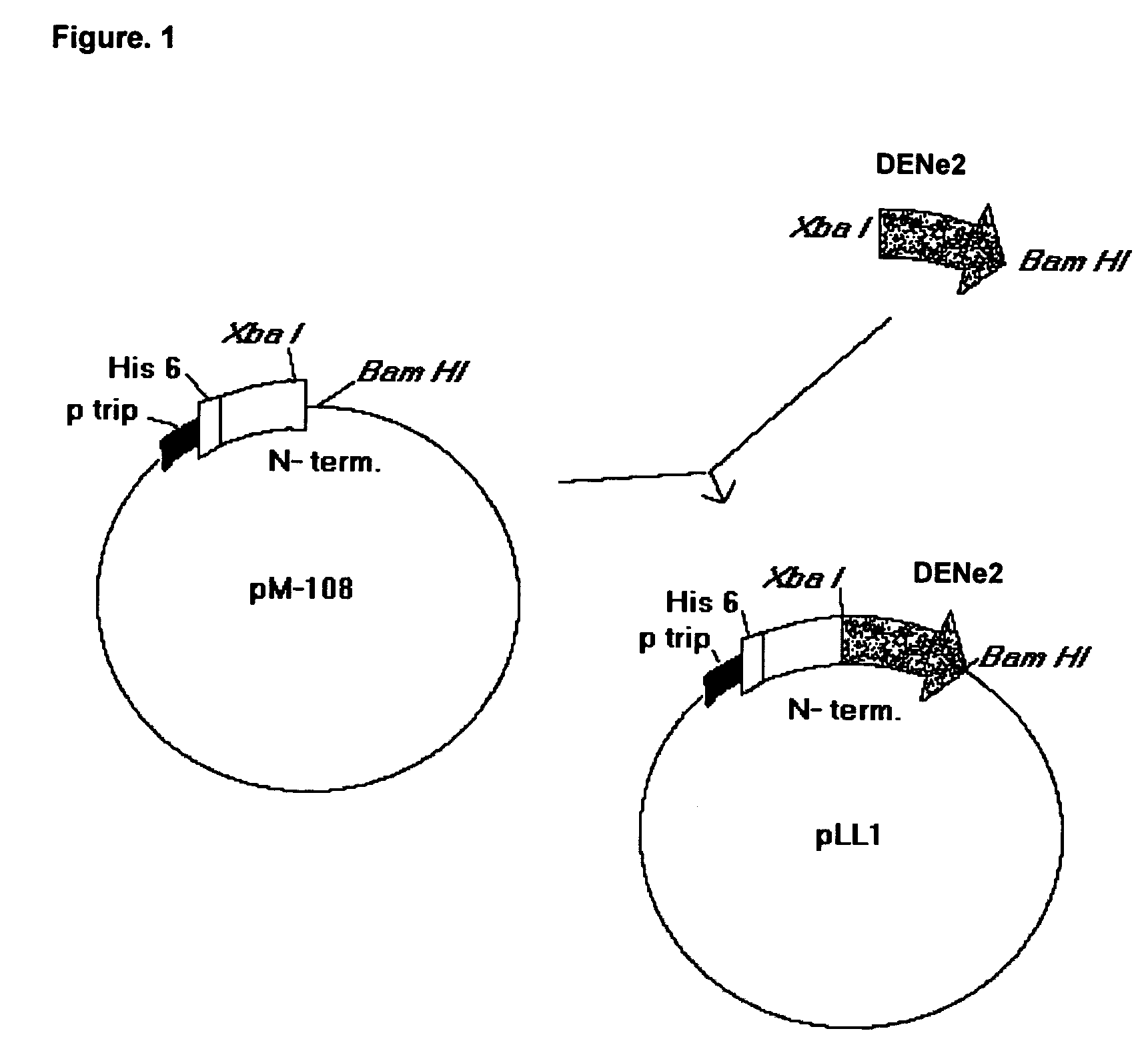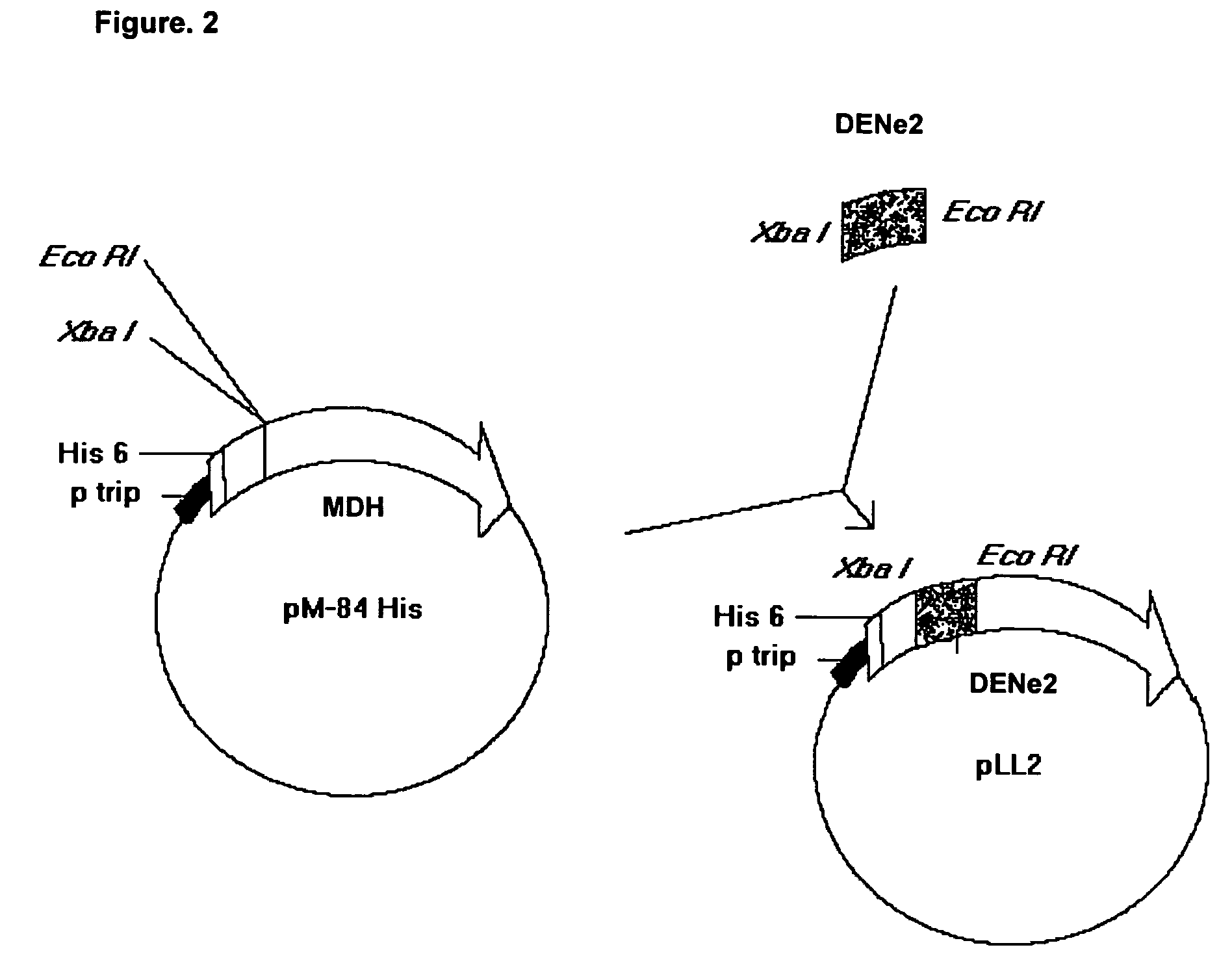Chimeric proteins that induce effects directed against viruses
a technology of chimeric proteins and viruses, applied in the field of biotechnology and pharmaceutical industry, can solve the problems that the human use of mbp has not been demonstrated, and achieve the effect of high levels of neutralizing antibodies
- Summary
- Abstract
- Description
- Claims
- Application Information
AI Technical Summary
Benefits of technology
Problems solved by technology
Method used
Image
Examples
example 1
Obtaining of PLL1
[0063]The nucleotide sequence that codifies for the amino acids from 286 to 426 of the envelope protein from the DEN-2 virus (Sec. Id. No. 22) was amplified with the oligonucleotides identified in the list of sequences as Sequence No.1 and Sequence No. 2 from the DEN-2 virus strain genotype Jamaica (Deubel V., Kinney R. M., Trent D. W. Nucleotide sequence and deduced amino acid sequence of the nonstructural proteins of Dengue type 2 virus, Jamaica genotype: Comparative analysis of the full-length genome. Virology 1988.165:234–244).
[0064]The vector was created by digestion of the pM108 His plasmid with Xba I / Bam HI, which contains the nucleotide sequence that codifies for the N-terminal region of the MDH and for a sequence of 6 histidines (Sequence No. 23). Upon ligation, the potential recombinants were analyzed by restriction enzyme digestion and positive clones were sequenced to check up the junctions. Competent cells W3110 (Hill C. W., Harnish B. W. 1982. Transpos...
example 2
Purification of the PLL1 Protein
[0065]The biomass obtained from the E. coli strain transformed with pLL1 and grown at 37° C. was disrupted by French press. The recombinant protein was obtained preponderantly as insoluble form associated to the pellet of the cellular disruption. From the pellet the protein was extracted with urea 6 M and the supernatant, containing the PLL1 protein, was loaded onto a G-25 column to eliminate the chaotropic agent. The fraction obtained was then loaded onto the Chelating-sepharose FF column (Pharmacia, UK), in the presence of Cu++ ions. The protein was eluted with Imidazole 50 mM and the obtained volume was loaded onto a G-25 column to finally obtain the protein in the formulation buffer NaCl 100 mM, KCl2 2 mM, Na2HPO4 10 mM, pH 7.2, KH2PO4 1 mM (PBS). This preparation was used for immunological studies.
example 3
Antigenic characterization of PLL1
[0066]The purified fraction of PLL1 was characterized either by its recognition by different polyclonal sera and / or murine monoclonal antibodies, as well as by positive human sera to Dengue (table 1).
[0067]
TABLE 1Reactivity of PLL1 protein to monoclonaland polyclonal antibodies.Abs**Specificity***PLL1*HMAFDEN-1+HMAFDEN-2++HMAFDEN-3−HMAFDEN-4−HMAFEEE−HMAFYFV−HMAFSLV−Mab 3H5NT+*A total of 10 μg of purified PLL1 was applied. The intensity of the signal obtained was evaluated from + to ++.**HMAF were used 1:100 while the Mab 3H5 was used in dilution 1:1000.***EEE: Equine Encephalitis virus. YFV: Yellow Fever virus. SLV: Saint Louis Encephalitis virus. NT: Neutralizing specific-serotype.
[0068]The highest recognitions in Dot blotting were obtained with the HMAF anti-DEN-2. This result coincides with the fact that the cloned region belongs to serotype 2. The recognition by HMAF against the other serotypes was less than in the case of serotype 2, in decreas...
PUM
| Property | Measurement | Unit |
|---|---|---|
| pH | aaaaa | aaaaa |
| transmission | aaaaa | aaaaa |
| antigenic structure | aaaaa | aaaaa |
Abstract
Description
Claims
Application Information
 Login to View More
Login to View More - R&D
- Intellectual Property
- Life Sciences
- Materials
- Tech Scout
- Unparalleled Data Quality
- Higher Quality Content
- 60% Fewer Hallucinations
Browse by: Latest US Patents, China's latest patents, Technical Efficacy Thesaurus, Application Domain, Technology Topic, Popular Technical Reports.
© 2025 PatSnap. All rights reserved.Legal|Privacy policy|Modern Slavery Act Transparency Statement|Sitemap|About US| Contact US: help@patsnap.com



